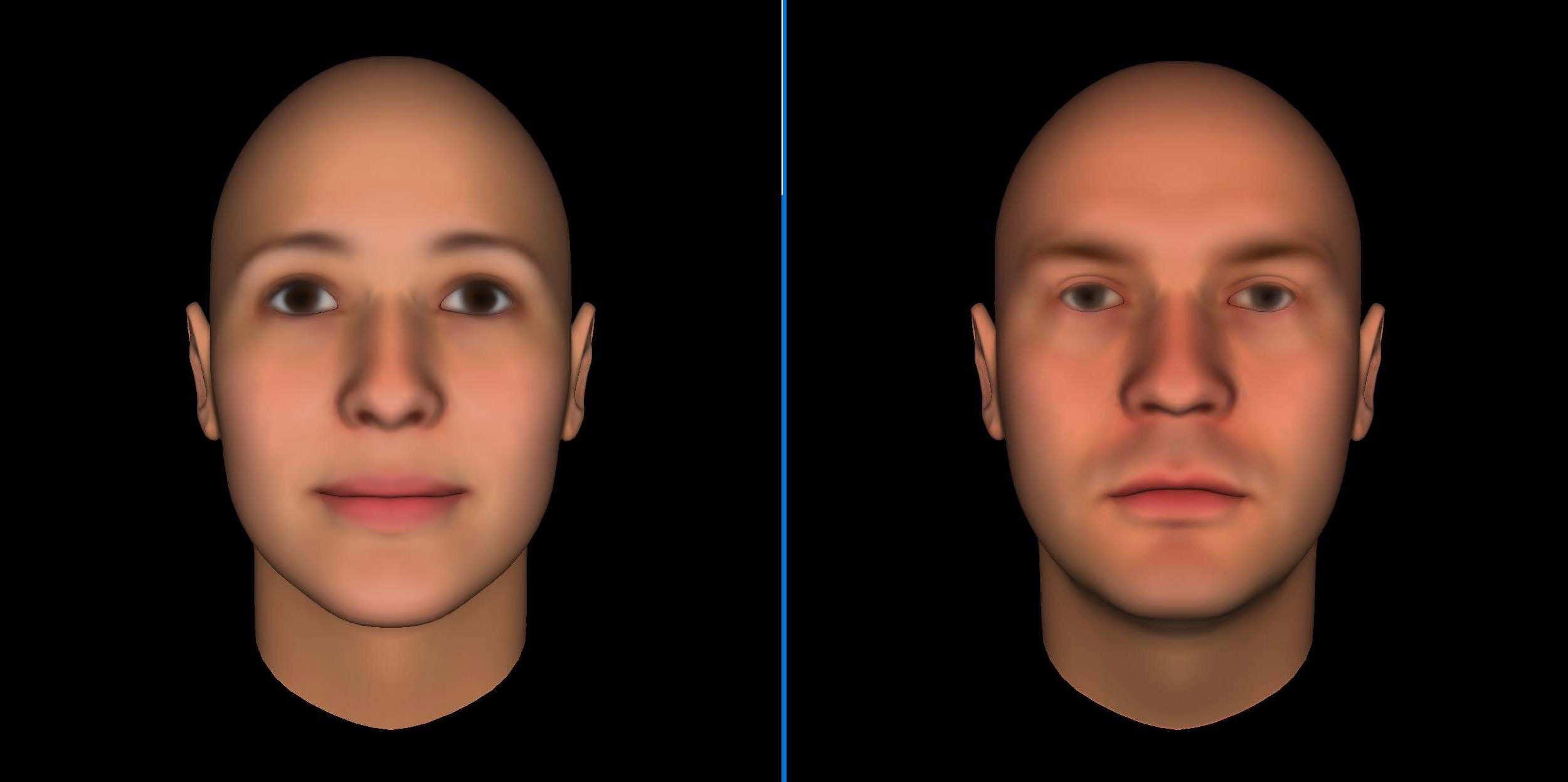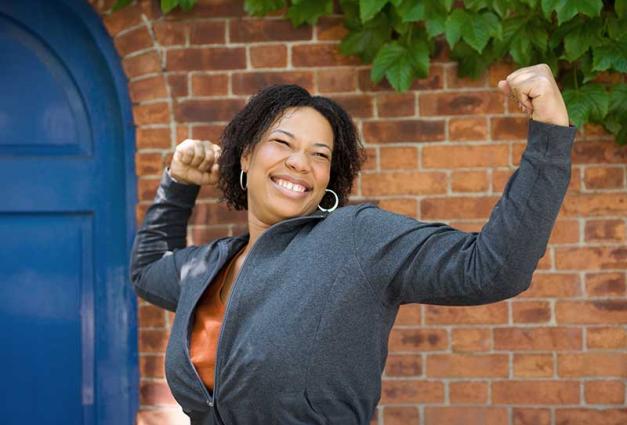Quick! You have to pick one of these strangers to watch something valuable while you step away. Who do you trust?

If you feel like trusting the person on the left, you aren't alone. People are more comfortable trusting someone whose face resembles a happy, approachable expression. Notice how the face on the left has upturned lips and raised eyebrows, like a smile. Conversely, the face on the right has downturned lips and harsh, threatening eyebrows, like a scowl.
Generally, it serves you well to approach people who are smiling and avoid people who are scowling. However, people can overgeneralize that gut reaction to faces that aren't smiling or scowling at all, if—like the two faces above—the structure of that face resembles an emotional expression. You've probably heard of "Resting Bitch Face" (RBF); that's the same idea. People are programmed to differentiate between "trustworthy" and "untrustworthy" faces and, according to research by Alexander Todorov and colleagues, they do so within milliseconds. This can have unintended consequences for the person being looked at.
Having an Untrustworthy Face
Now let's imagine that you are someone with an inherently untrustworthy face, like the one on the right. Even when you're making no facial expression at all, you look like you're scowling. An untrustworthy appearance can affect the way your peers, friends, teachers, employers, and more respond to you. In an extreme example, social scientists John Paul Wilson and Nicholas Rule found that in real court case decisions, men who looked less trustworthy were more likely to receive the death sentence—even those who were later proven innocent.
Do You Act How You Look—or Do You Look How You Act?
Everything we've discussed so far is about how other people react to you. Is it possible that what you look like is related to how you behave? For example, if you look untrustworthy, and everyone treats you as if you are untrustworthy, you might live up to expectations and become untrustworthy. This would be an expectancy effect. On the other hand, if you behave in an untrustworthy way—by stealing, cheating, or getting into fights—you might develop an untrustworthy appearance. This is the Dorian Gray effect, named after the protagonist of Oscar Wilde's famous novel, whose hideous deeds manifested in a grotesque appearance.
To test for expectancy and Dorian Gray effects, we looked at two hundred boys from neighborhoods with high rates of juvenile delinquency. For twenty-five years, these boys gave regular and detailed reports about their untrustworthy behavior. This included things as minor as withholding change from a cashier clerk, or as severe as physically assaulting someone with the intent to kill. Critically, these boys were also photographed from ages 13 to 38.
Consistent with expectancy effects, boys among this group who started out looking untrustworthy engaged in more and more delinquent behaviors as they got older. This might be because people in their lives—like teachers, classmates, doctors, or bus drivers—treated them differently than their peers who looked trustworthy.
Consistent with Dorian Gray effects, boys who started out behaving in untrustworthy ways looked more untrustworthy by the time they were 18 years old. However, behavior after the age of 18 wasn't related to changes in appearance later in life. That is, no matter how much—or how little—these young adults engaged in untrustworthy behaviors, they looked just as trustworthy when they were 38 as they did when they were 18.
Taken together, this suggests that youth who fall into a bad crowd will probably look different from their peers by early adulthood, when a lot of people are looking for jobs or starting college. Not only could an untrustworthy appearance disadvantage these youth, but regardless of how they behave in adulthood, they will still have an untrustworthy face. This could make it difficult for a troubled teen to befriend nice kids, establish mentorships with teachers, or make a good impression on future employers. If young adults can't do those things, even if they are trying to distance themselves from bad decisions in their youth, they might return to crime.
Since our sample was 90% White and exclusively male, it's unclear whether expectancy and Dorian Gray effects hold true for other groups. Furthermore, although we measured how trustworthy these boys looked and behaved, in this study, we didn't directly measure the processes we expected to connect appearance and behavior (for example, whether teachers were harsher to youth who looked untrustworthy).
Even in the context of these limitations, our study highlights striking connections between appearance and behavior during critical developmental periods for young men. It turns out that when you judge a book by its cover, you might be writing its story.
For Further Reading
Alley, Z. M., Kerr, D. C. R., Wilson, J. P., & Rule, N. O. (2023). Relating facial trustworthiness to antisocial behavior in adolescent and adult men. Journal of Nonverbal Behavior, 74(3), 1-18. 10.1007/s10919-023-00432-x
Todorov, A., Pakrashi, M., & Oosterhof, N. (2009). Evaluating faces on trustworthiness after minimal time exposure. Social Cognition, 27, 813–833. 10.1521/soco.2009.27.6.813
Wilson, J. P., & Rule, N. O. (2016). Hypothetical sentencing decisions are associated with actual capital punishment outcomes: The role of facial trustworthiness. Social Psychological and Personality Science, 7(4), 331–338. 10.1177/1948550615624142
Zoe Alley investigates how social and policy context influences antisocial behavior and substance use among youth and young adults. Today, she applies her quantitative skillset in a research role for the State of Oregon.




